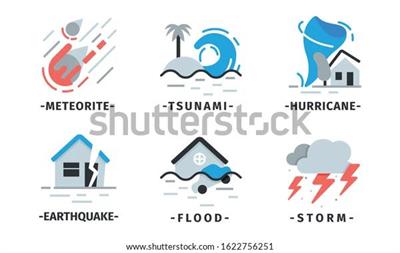
PUMPA - SMART LEARNING
எங்கள் ஆசிரியர்களுடன் 1-ஆன்-1 ஆலோசனை நேரத்தைப் பெறுங்கள். டாப்பர் ஆவதற்கு நாங்கள் பயிற்சி அளிப்போம்
Book Free DemoHazards can be classified in different ways.
- Based on their causes of occurrence
- Based on their origin
I. Based on their causes of occurrence
Hazards can be broadly classified into three types: Natural, Human-made and Socio-natural hazards.
1. Natural hazards:
Natural hazards are the results of natural processes and human beings have no role to play in such hazards.
Example:
Earthquakes, floods, cyclonic storms, droughts, landslides, tsunamis and volcanic eruptions

2. Human-made hazards:
Human-made or man-made hazards are undesirable events caused by human activities. It can be an accidental chemical leak in industry, an oil spill from ship, or an intentional act. Such hazards can disturb human as well as environmental health, safety, welfare and cause damage or destruction to property.
Example:
Explosions, hazardous wastes, pollution of air, water and land, dam failures, wars or civil conflicts and terrorism.

3. Socio-natural hazards (Quasi-natural hazards):
Events that are caused by the combination of natural forces and misdeeds of humans are classified as socio-natural hazards.
- The frequency and intensity of floods and droughts may increase due to indiscriminate deforestation, particularly in the catchment areas of the rivers.
- Though landslides are caused by natural forces, their frequency and impact may be aggravated by human intervention, such as construction of roads, houses etc., in mountainous areas, excavating tunnels, and mining and quarrying.
- Similarly, storm surge hazards may be worsened by the destruction of mangroves.
- In Urban areas, smog is a serious problem. The emissions from vehicles and industries, combustion of wood and coal combined with fog lead to smog.
Example: